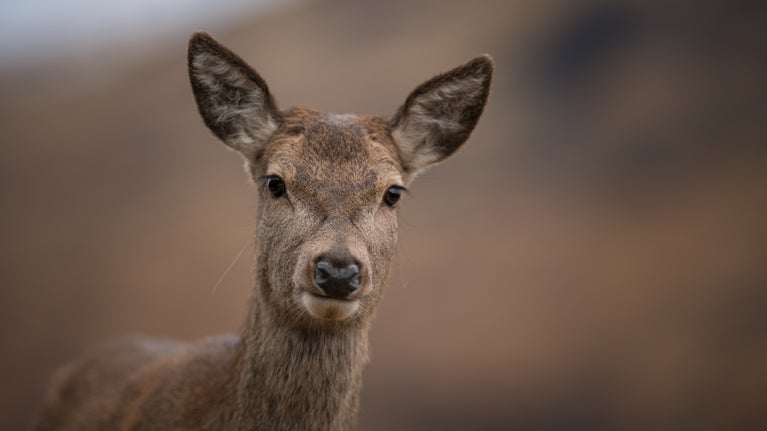
Discover more at Borrowdale and Derwent Water
Find out how to get to Borrowdale and Derwent Water, where to park, the things to see and do and more.

The ancient ‘Atlantic oakwoods’ in Borrowdale and Derwent Water are both protected as Sites of Special Scientific Interest (SSSI). Find out which rare plants and animals you can expect to see during your visit, including the best places to spot native red squirrels.
Owls have their breeding season when snow is still falling. If you go for a walk in Great Wood around February half term, you can hear tawny owls hooting to each other in their quest to find a mate; the female calls ‘tu-wit’ and the male replies ‘tu-woo’.
While there is fresh snow on the ground, look out for the tracks of wild red deer, rabbits and even otters.
Remember to keep your ears open as well as your eyes and enjoy the soundtrack of winter in the mountains with the song of the raven which is much deeper and more musical than the crow.

Get in amongst this ancient landscape by following the moderate waymarked walk from the Great Wood car park.
The woodlands that cloak the surrounding fells are dominated by oak: these 'Atlantic oakwoods' are the last surviving fragments of an enormous ancient forest that once stretched from western Scotland all the way down the west coast of Britain and Wales.
They receive an incredible 11 feet (3.5m) of rainfall per year and therefore they qualify as temperate rainforest. Look up as you walk and in the crooks of the branches you may see ferns growing – another indicator of rainforest status. As of 22 May 2024, 721 hectares of the Borrowdale rainforest has been declared a new National Nature Reserve as part of the King series. To find out more, click here.
The woods in this valley are one of the most important habitats in Europe for mosses and liverworts (bryophytes), and lichens – especially 'old forest species'. As a result of their rarity and diversity, all of the Borrowdale rainforest is protected as Sites of Special Scientific Interest (SSSI).

Red squirrels have inhabited Cumbria for the past 6,000 years. Today, their grey cousins are pushing them close to extinction, but there is a population in the valley that we are fighting hard to protect.
The best time to come for a walk in Borrowdale's woods and see squirrels is in spring or early summer before the leaf canopy hides them from view, or during and after the October half term once the leaves have started to drop.


Find out how to get to Borrowdale and Derwent Water, where to park, the things to see and do and more.
From conservation projects and protecting archaeological features to improving the experience of visitors or laying hedgerows, our work at this special place is rich and varied.

Take in the views from Friar’s Crag and visit historic sculptures on a lakeside walk around Derwent Water or set off from Keswick to explore the surrounding woodlands and fells.

There are nine National Trust car parks in Borrowdale and Derwent Water to choose from. Find out how to find them and how much parking costs.

Derwent Island and House is currently closed to visitors, but the site is still an interesting element of the Borrowdale landscape. Find out all you need to know about the history of the island and the many owners of the house.

Learn how to spot red squirrels, the best times to see them and how to tell them apart from grey squirrels.

Find out more about the work we are doing to look after the Borrowdale Temperate Rainforest and why it has been declared a new National Nature Reserve.